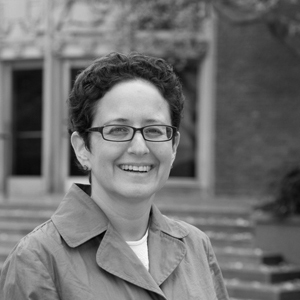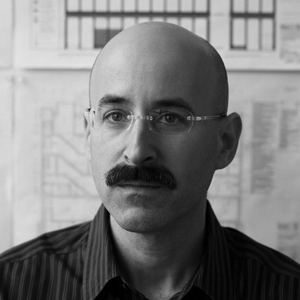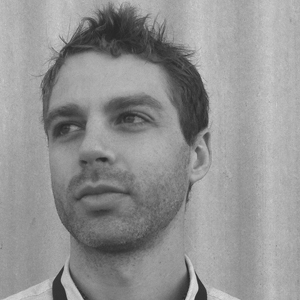Perspectives on climate change: Regulation vs. innovation
Is regulation or innovation the better tool to slow climate change?
 Vishaan Chakrabarti
Vishaan Chakrabarti
Innovation in regulation.
Vishaan Chakrabarti is a Principal at SHoP Architects, author of A Country of Cities, and Holliday Professor and Director of the Center for Urban Real Estate at Columbia University.
 Stephen Gardiner
Stephen Gardiner
This is a false dichotomy. Regulation can spur innovation. Even in narrow economic terms, climate change involves a massive externality, which needs to be corrected if the incentives for innovation are to be better. So, basic economics tells you that this is a case where regulation should enhance efficiency.
Stephen Gardiner is Professor of Philosophy and Ben Rabinowitz Endowed Professor of Human Dimensions of the Environment at the University of Washington, Seattle.
 Rosalie Genevro
Rosalie Genevro
Regulation and innovation are both needed. Regulation clearly works in many areas: decreasing smoking, increasing food safety, producing safer buildings. But as an intrinsically limiting approach—don’t do the bad—it needs to be complemented by the intrinsically opening up approach—envision the better—of innovation. Slowing climate change will not happen without a lot of effort toward envisioning better ways to live.
Rosalie Genevro is Executive Director of The Architectural League of New York and the project director of The Five Thousand Pound Life.
 Dale Jamieson
Dale Jamieson
This is a false dichotomy. Regulation stimulates innovation and leads to the diffusion of new technologies. What we don’t need is stupid regulation or mindless innovation.
Dale Jamieson is professor of environmental studies and philosophy at New York University and author of the book Reason in a Dark Time: Why the Struggle to Stop Climate Change Failed–and Why Our Choices Still Matter.
 Alex Klatskin
Alex Klatskin
Innovation happens much faster than appropriate regulation. The scale of regulation required will be impossible to implement quickly enough. What we can do is design any future regulation to encourage innovation.
Alex Klatskin is a General Partner of Forsgate Industrial Partners, a private industrial real estate development and investment firm based in Teterboro, New Jersey.
 Melissa Lane
Melissa Lane
Both. Smart regulation is needed to drive and incentivize innovation in sustainable directions.
Melissa Lane is Professor in the Department of Politics at Princeton University, and affiliated faculty member in the Department of Classics and the Department of Philosophy.
 Anthony Leiserowitz
Anthony Leiserowitz
Both are going to be needed and, if done smart, are synergistic. Regulation of carbon dioxide, whether by standards, carbon prices, etc., can create the market conditions that spur research, development, and deployment of low carbon technologies, products, services, and so on. New innovations will also require smart regulations to help them diffuse as rapidly as possible. People think of the iPhone as a great innovation, which it was. But it was born in a regulated telecommunications ecosystem that had evolved to the point where the iPhone could take off. You need both.
Anthony Leiserowitz is Director of the Yale Project on Climate Change Communication and a research scientist at the School of Forestry and Environmental Studies at Yale University.
 Paul Lewis
Paul Lewis
They are and have to be tied together. Regulation spurs innovation, but innovation makes viable the transformations necessitated by regulation.
Paul Lewis is a principal of LTL Architects and a faculty member in the School of Architecture at Princeton University.
 Ted Nordhaus
Ted Nordhaus
We are not going to regulate our way to deep cuts in global emissions. The idea that the entire world would agree to binding global caps has always been fantasy. Regulations will play an important role in particular contexts, including in helping to drive particular innovations, but long-term technological change is the main event. We will need to replace virtually our entire fossil energy infrastructure with non-fossil technologies. Most present day low carbon technologies are simply not up to the task of replacing fossil energy at the scales necessary to deeply cut emissions. As such, innovation must be the sine qua non of effective climate policy.
Ted Nordhaus is a co-founder of The Breakthrough Institute — a paradigm-shifting think tank committed to modernizing environmentalism for the 21st century.
 Albert Pope
Albert Pope
It is hard to motivate meaningful action on an agenda constituted solely of regulatory prohibitions. To paraphrase Shellenberger and Nordhaus, such motivation is akin to Martin Luther King giving a rousing speech entitled “I Have a Nightmare.” Driving environmental discourse through a positive vision of innovation rather than regulation runs the spectrum of environmental responses from production to preservation — from Shellenberger and Nordhaus’s vision of energizing energy markets to George Monbiot’s vision of energizing nature or “rewilding.”
Energizing markets is new to environmentalism but old to everyone else. Market promotion is market promotion regardless of whether it is done by environmentalists or by the chamber of commerce; it is difficult to construct a positive vision around it. The success of the Dark Mountain Project, on the other hand, suggests that innovation involves developing a positive vision of nature beyond its use as an exclusive human resource.
Albert Pope is the Gus Sessions Wortham Professor of Architecture at Rice University. He is the author of Ladders (1997) and numerous articles concerning the broad implications of post-war urban development.
 Ted Steinberg
Ted Steinberg
The consensus in economics — which is hardly a radical discipline by any means — is that something must be done to address the potentially catastrophic impact of climate change. Balancing the costs of this kind of radical environmental transformation is something that regulation (a carbon tax, for example) is best at achieving.
Ted Steinberg is Professor of History and Professor of Law at Case Western Reserve University. His book Gotham Unbound: The Ecological History of Greater New York (2014) examines the ecological changes that have resulted in the reality of present-day New York City.
 Emily Talen
Emily Talen
We need reform of existing regulation. That is a form of innovation.
Emily Talen is a senior sustainability scientist and a professor in the School of Geographical Sciences and Urban Planning at Arizona State University.
 Adam Yarinksy
Adam Yarinksy
Both regulation and innovation are necessary to slow climate change. Regulation is vital to establish new frameworks that enable emerging technologies to compete against the well-established advantages of the status quo. In response, innovation on the demand side (inventions like the LED light) and on the supply side (the development of alternative energy sources) will follow to reduce reliance on fossil fuels.
Adam Yarinsky is a principal of Architecture Research Office (ARO) in New York.
 Andrew Wade
Andrew Wade
In the present moment it looks like innovation holds more currency. If you take past behavior to be the best indicator of future behavior, we’ve repeatedly seen national and international policy fail to incorporate scientific information in a rational way. Why would we expect a different result in the future without significantly different circumstances?
Regulation of carbon emissions is needed, but the political apparatus we have is misaligned with that imperative. The best chance of success rests with innovating solutions that are better than the status quo—ones that will latch on to the unprecedented global connectivity of the twenty-first century to scale-up and embed themselves within society. In summary, I think humanity’s demonstrated progress in technology is more convincing than its demonstrated progress in politics. Scientific knowledge is more transferrable through generations than civic acumen. The problem is, eventually we’ll need both.
Andrew Wade was the J. Clawson Mills Fellow at The Architectural League of New York and the project lead of The Five Thousand Pound Life from 2013-2015.

